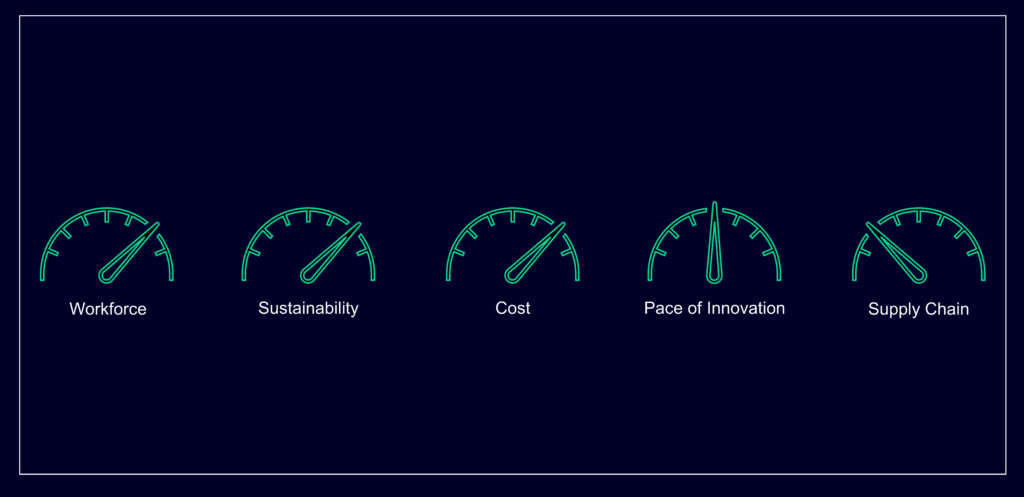How digitalization will help overcome industrial pressures

Last year, companies in all industries continued pressing through the uncertainty of recent history while also looking to a future of great potential. The prevalence of smart and connected products in many industries has continued to grow as companies seek to improve functionality and user experience through software and electronics, and an increased interest in clean energy sources. Meanwhile, challenges related to supply chain management, workforce dynamics, and sustainable innovation drove the uncertainty of the last year while also offering key opportunities for innovation and creative solutions.
While the challenges faced by companies in 2024 are much the same as before, year-to-year differences, however subtle, do exist and will have large impacts on industries and companies in the coming year. I like to think about these trends in terms of the amount of pressure each is placing on industries, measured by an associated pressure gauge. This allows us to examine each trend relative to the others and assess how it has changed since last year.
Five pressure gauges
Considering this set of pressure gauges, with one dedicated for each trend or challenge, we can think about how the readings on these pressure gauges will change from 2023 to 2024, and about what may be driving each change in pressure:
- Workforce (Up): A The wave of retirees continues, leaving an acute need for engineers in the systems, electrical, and electronics domains. The next generation of engineers and technicians are arriving in industry with plenty of talent and passion, but not quickly enough to reinforce teams in need of resources. As a result, industries of all types are facing shortages in key roles, from engineering through manufacturing and beyond, leaving companies to find new methods of replacing outgoing talent and experience with a mixture of new talent and new technology.
- Sustainability (Up): Multiple incentives and forces are pushing industry toward a more sustainable future. These include new regulations, new business opportunities, and the ability to drive social change and establish positions of industry leadership in environmentally friendly operations. Moving forward, the pressure for companies to take action on climate change and improve overall sustainability of their operations will continue to grow. Laggards will face significant penalties whether from various levels of government, lost business, or tarnished brand image.

- Pace of Innovation (Even): There is a long trend of accelerating innovation cycles across many industries. This will continue as companies are faced with faster development cycles and a constant drive to innovate to stay ahead of the competition. While this pressure is high, relative to other pressures, it will remain much the same from 2023 into the new year.
- Cost (Up): Things are more expensive at all levels of the supply chain. Producers face increased cost of labor and materials. On the consumer side, everything is becoming more expensive, which simultaneously reduces the consumer’s willingness and ability to bear any additional cost increases. The result is that companies are unable to increase prices to offset increased cost and must therefore seek to increase efficiency to manage cost and maintain their operating margins.
- Supply chain (Down): Supply chain pressures have been relieved, particularly as silicon chip production has recovered. Even as this pressure gauge drops, companies must remain vigilant to the next disruption. There is no telling when or where the next disruption will occur, as was clearly demonstrated by the COVID-19 pandemic.
How do companies get ready to take on the challenges of the future? It is critical to look beyond immediate fluctuations in industrial pressures and adopt a strategy to become more resilient, agile, and adaptive for the future. The best way to do this is through digital transformation. Digital transformation enables companies to manage their businesses in both the real and digital worlds. This combining of real and digital unlocks a critical resource: data. Bringing these two worlds together enables the flow of data between all stakeholders involved in the development of a product or the production process itself.


